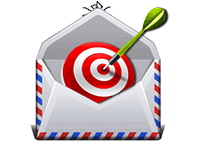
The standard text editor in Joomla since 1.5 until 3.x is TinyMCE. It has all the basic functions you need to write content (text and images) and publish your blog. In fact, text editor is one of the most important components in Joomla. The TinyMCE editor is like a simplified word processor and with limited features.
However, I am very used to a third party text editor, JCE - Joomla Content Editor, which is a much better text editor than TinyMCE. I am using JCE in all my websites. Furthermore, JCE is FREE, so you should give it a try.








